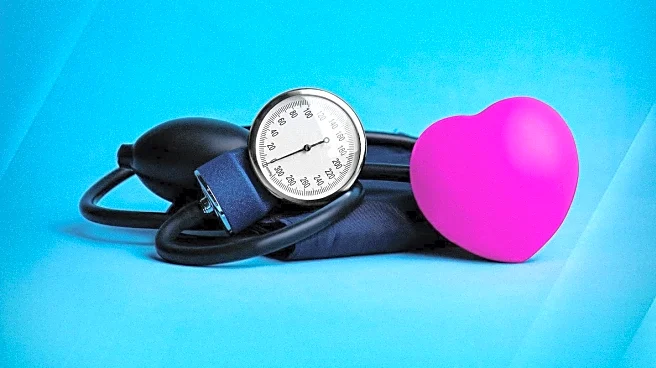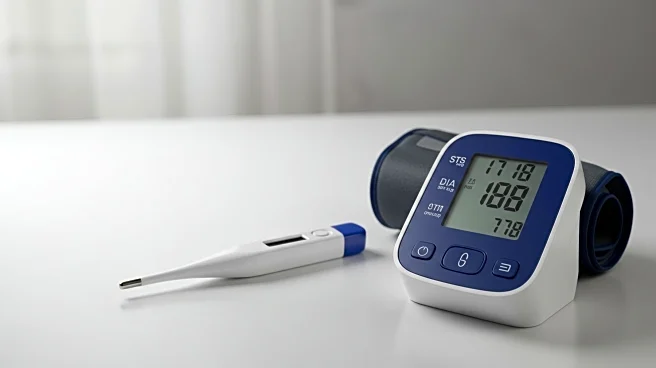What's Happening?
Researchers from the University of Cambridge have discovered inaccuracies in common cuff-based blood pressure readings, which may lead to as many as 30% of hypertension cases being missed. The study, published in PNAS Nexus, explains the physics behind these inaccuracies and suggests straightforward changes to improve measurement accuracy. The cuff-based method, known as the auscultatory method, often overestimates diastolic pressure while underestimating systolic pressure. The researchers built an experimental model to study the effects of downstream blood pressure, identifying a previously unknown factor causing underestimation.
Why It's Important?
Accurate blood pressure measurement is crucial for diagnosing and managing hypertension, a leading risk factor for heart disease and stroke. The study's findings could significantly impact clinical practices by improving the accuracy of blood pressure readings, leading to better health outcomes for patients. By addressing these inaccuracies, healthcare providers can ensure more reliable diagnoses and treatments, potentially reducing the incidence of undiagnosed hypertension and associated complications.
What's Next?
The researchers are seeking funding for clinical trials to test their findings in patients and are looking for partners to refine their calibration models. Collaboration with clinicians will be essential to implement changes in clinical practice. Potential solutions include modifying measurement protocols, such as raising the arm before taking readings, which could improve accuracy without the need for new devices.
Beyond the Headlines
This research highlights the importance of understanding the mechanics behind medical devices and their impact on patient care. It may lead to broader discussions on the standardization of medical measurements and the need for continuous innovation in healthcare technology.











